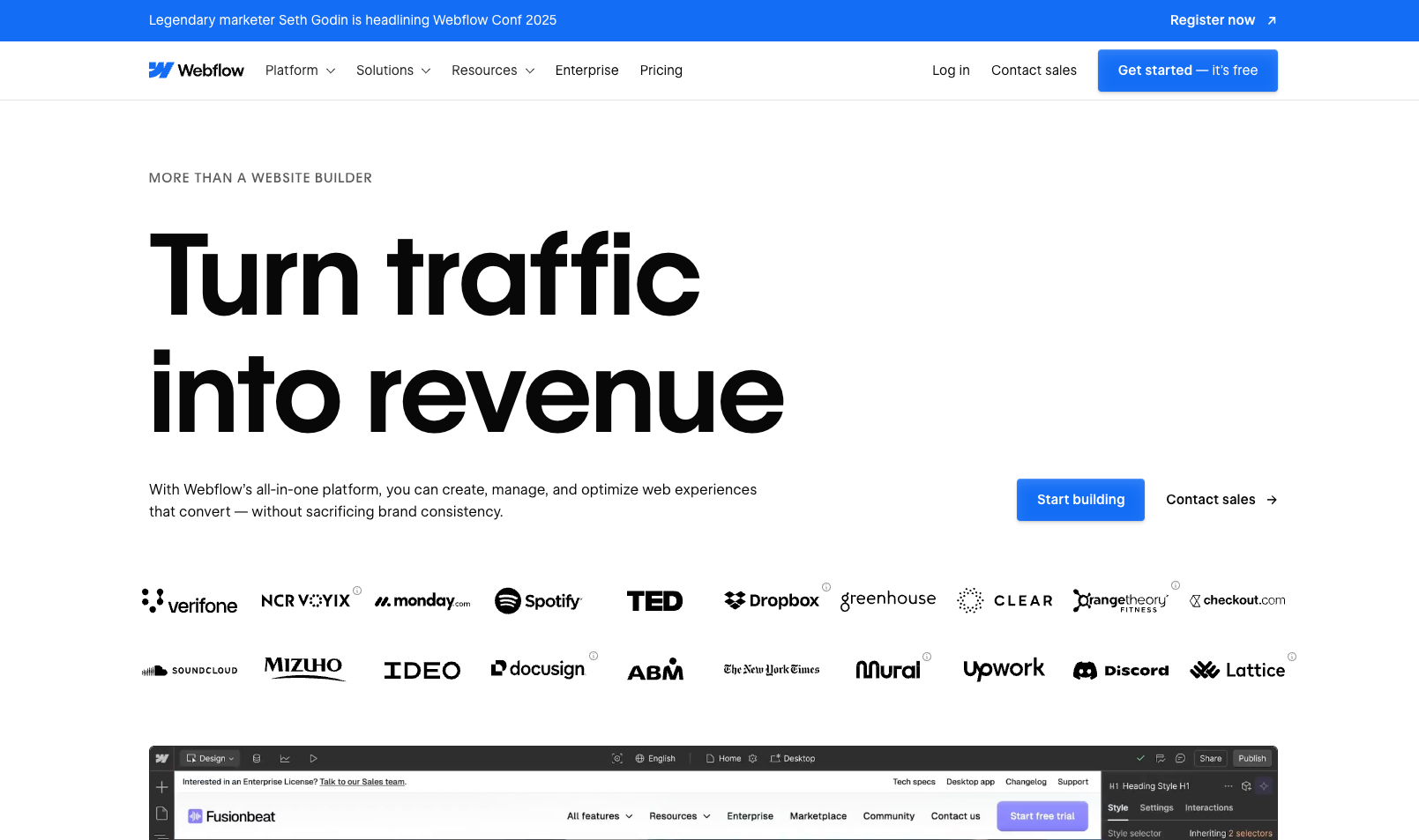Webflow is a no-code web design and development platform that empowers designers, developers, and businesses to create responsive, professional-grade websites visually—without writing a single line of code. Combining the flexibility of traditional development with the ease of drag-and-drop design tools, Webflow enables users to build custom websites while maintaining full control over layout, structure, and functionality.
- Visual Web Design: Webflow’s intuitive visual editor allows users to build websites using a drag-and-drop interface while still retaining the power and precision of coding. Every design decision translates into clean, semantic HTML, CSS, and JavaScript, giving users production-ready code without needing to write it manually.
- Responsive Design: Webflow makes it easy to design for all screen sizes. Users can customize the look and behavior of a site on desktop, tablet, and mobile views, ensuring a seamless experience across devices.
- CMS (Content Management System): Webflow includes a flexible CMS that enables users to create custom content types—like blogs, portfolios, or product listings—and update content dynamically. Content editors can manage updates without affecting the site design or needing technical skills.
- Hosting and SEO Tools: Webflow offers fast, secure hosting with global content delivery and built-in SEO tools such as customizable meta tags, alt text, and clean URLs. This ensures sites load quickly and are optimized for search engines right out of the box.
- E-commerce: Webflow also supports e-commerce functionality, allowing businesses to build, manage, and customize online stores without relying on third-party platforms. Users can control the design of product pages, checkout processes, and customer emails.
- Animations and Interactions: The platform supports advanced animations and interactions—scroll effects, hover states, and more—without the need for JavaScript, enabling highly engaging user experiences.
Webflow is popular among freelance designers, agencies, startups, marketers, and businesses that need visually appealing, custom websites without relying on developers. It’s also used by enterprises looking to scale their digital presence quickly and flexibly.
Webflow is a powerful no-code web design platform that bridges the gap between design and development. It gives users complete creative control while streamlining the entire web creation process—from concept to launch—making it ideal for building fast, scalable, and stunning websites.







